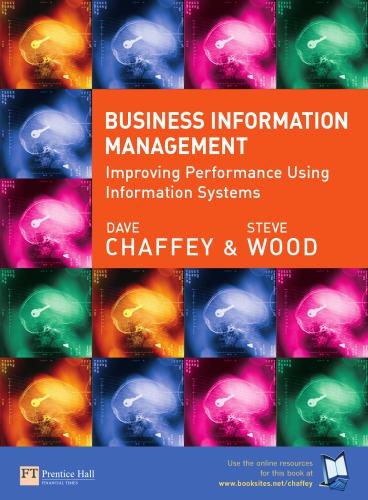2 Summarize changes to organizational structure and responsibilities which may be necessary for introduction of such a
Question:
2 Summarize changes to organizational structure and responsibilities which may be necessary for introduction of such a scheme. The high-street retailer Boots launched its Advantage loyalty card in 1997. Today, there are over 15 million card holders of whom 10 million are active. Boots describes the benefits for its card holders as follows:
The scheme offers the most generous base reward rate of all UK retailers of 4 points per £1 spent on products, with average card holders receiving 6.5 points per £1 when taking into account all other tactical points offers.
There are 23 analysts in the Customer Insight team run by Helen James who mine the data available about card users and their transactional behaviour.
They use tools including MicroStrategy’s DSS Agent and Andyne’s GQL which are used for the majority of queries. IBM’s Intelligent Miner for Data is used for more advanced data mining such as segmentation and predictive modelling. Helen James describes the benefits of data mining as follows:
From our traditional Electronic Point-of-sale data we knew what was being sold, but now [through data mining] we can determine what different groups of customers are buying and monitor their behaviour over time.
The IBM case study gives these examples of the applications of data mining:
What interests the analysts most is the behaviour of groups of customers . They are interested, for example, in the effect of Boots’ marketing activity on customers – such as the impact of promotional offers on buying patterns over time. They can make a valuable input to decisions about layout, ranging and promotions by using market basket analysis to provide insight into the product purchasing repertoires of different groups of customers.
Like others, Boots has made a feature of multibuy promotional schemes in recent years with numerous ‘three for the price of two’ and even ‘two for the price of one’ offers. Using the card data the Insight team has now been able to identify four groups of promotion buyers:
■ the deal seekers who only ever buy promotional lines;
■ the stockpilers who buy in bulk when goods are on offer and then don’t visit the store for weeks;
■ the loyalists – existing buyers who will buy a little more of a line when it is on offer but soon revert to their usual buying patterns; and
■ the new market – customers who start buying items when on promotion and then continue to purchase the same product once it reverts to normal price.
Step by Step Answer:

Business Information Management : Improving Performance Using Information Systems
ISBN: 9780273688143
1st Edition
Authors: Dave Chaffey; Steve Wood






